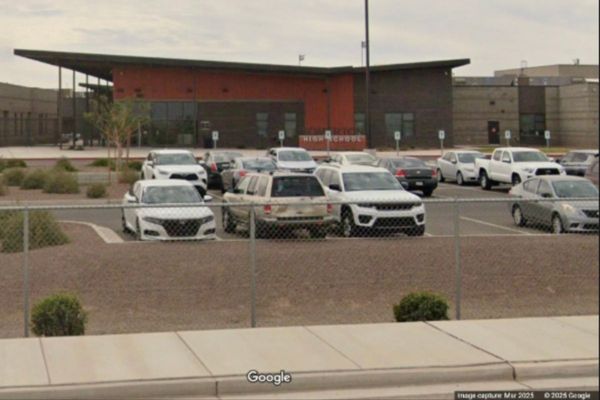
In February 2021, the European Space Agency (Esa) announced it would be recruiting a new astronaut class, the first since 2008. It encouraged applicants from a broader spectrum of gender, physical ability, age and ethnicity, so I fired off an application and joined a WhatsApp group of like-minded hopefuls. There were 23,000 applicants in total, and some obvious criteria. To get on to the longlist you had to have a couple of degrees in science, preferably in different disciplines, with at least one at master’s level or above. As for the other qualities that might make a good astronaut, we didn’t know precisely what they were looking for, but we could guess: they seem to like people who are outdoorsy, a bit sporty, good in teams and able to put up with quite a lot of discomfort.
Above all, they seemed to prefer people who had what they called “operational experience”, which meant pursuits where you made real decisions with some skin in the game, preferably your own. I made both the longlist of 17,000 applicants, and the smaller group of close to 1,500 who went on to the next stage in Hamburg, Germany. We did classroom tests and video games: maths and physics quizzes, some psychometric screening and a bunch of fiendishly difficult pilot aptitude tests. My childhood bashing away on an Atari 2600 hadn’t gone to waste. And the competitors in the room were no slouches: intrepid oceanographers, particle physicists, military test pilots and Antarctic explorers, to list but a few.
Given the calibre of my fellow applicants, I was shocked, some weeks later, to get a call for the next round of selection at the Esa Astronaut Centre in Cologne. Just 400 of us left. As I mingled with the other candidates at the hotel bar we all wondered who among us might one day walk on the moon. The testing day was brutal and cleverly tuned to put you on your back foot from the get-go. Lengthy interrogations, psychological evaluations and professional parlour games followed, alone and in groups. We all came away shaken and more than a little stirred.

The next round of testing was in Toulouse. I think I yelped out loud when I opened the invitation. Down to the final 91 now. At Esa’s medical evaluation centre, we checked into a hospital for the best part of a week. The examination was exacting and exhaustive. But as I thrashed away on a treadmill, hooked up to an ECG machine, I noticed a short-lived run of abnormal beats. The testing team noticed them too. We exchanged uncomfortable glances.
People misunderstand this part of the selection process. They’re not looking for superheroes. The tests are designed to make sure you present a very low risk of getting seriously ill on mission – and a very high chance of not having a major medical event in the next 15 years that would prevent Esa cashing in on its investment. Everything now depended on a squeaky-clean bill of health. And this, for me, was where things started to get dangerous, the stage where I began to let hope rise. Even my kids started to get a little bit excited. But burning in the back of my mind was that run of abnormal heartbeats, which I knew might do me in.
Then, one day in September, people started getting the chop. The WhatsApp group pinged with a stream of candidates getting picked off by email one by one, like that scene in The Matrix where the bad guy goes around sequentially unplugging Neo’s trusty crewmates. I hoped beyond hope that I might somehow sneak through. But my email came around midday: a curt note thanking me for taking part but telling me that – for medical reasons beyond my control – I would go no further in the process. Game over.
I’d applied and been interviewed for the job I’d wanted since I was five. I’d got past the aptitude tests and interviews. I’d got down from 23,000 hopefuls to the final 91. But the axe had come down, and my astronaut helmet lay in the basket. After 18 months, it was a hard process to fall out of. But chasing the stars all my life fuelled my ambitions in science and medicine and led to the career I continue to love here on Earth. I’m proud of my service as national clinical adviser to NHS England’s emergency preparedness team during the pandemic, and I still get to fly as a doctor with a helicopter emergency medical service in the south-east. Yes, it’s 17,000 mph slower than I would have ideally liked, but we do good work. And so the consolation prize is good, almost as good as the prize of being an astronaut itself.
There is a bittersweet epilogue to this story. Esa trumpeted its intention to put diversity at the centre of this selection. But that commitment proved partial. In this new astronaut class there is – once again – an absence of ethnic diversity that is genuinely difficult to understand. Historically, human space exploration has shown us that there might be a future in which there’s a place for everyone. It inspires new generations to take on the impossible in search of the stars and – where they fall short – to leave them in destinations as wonderful, if not more wonderful still. It did so for me.
So it is a source of great sadness that a new generation of European children will gaze upon this latest Esa astronaut class without seeing themselves reflected. Many among them will learn from this what we have known since antiquity: non est ad astra mollis e terris via – there is no easy way from the Earth to the stars. But I hope that they will remain undeterred, and that this will only embolden them.
Dr Kevin Fong is a consultant anaesthetist and professor at University College London Hospitals







